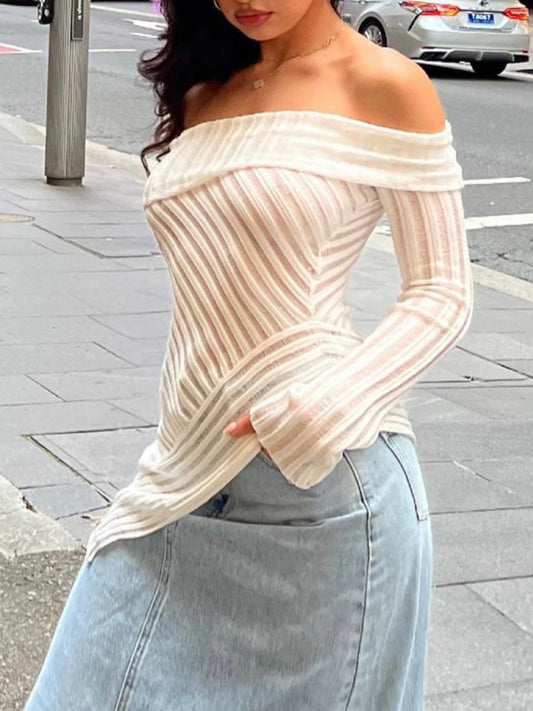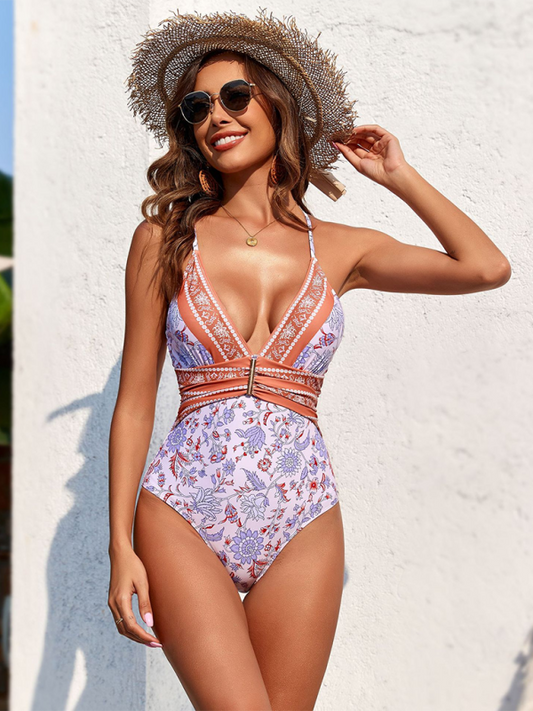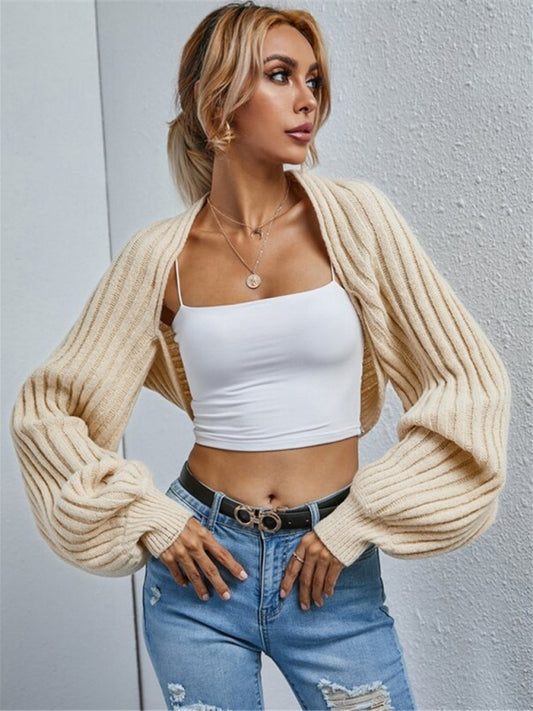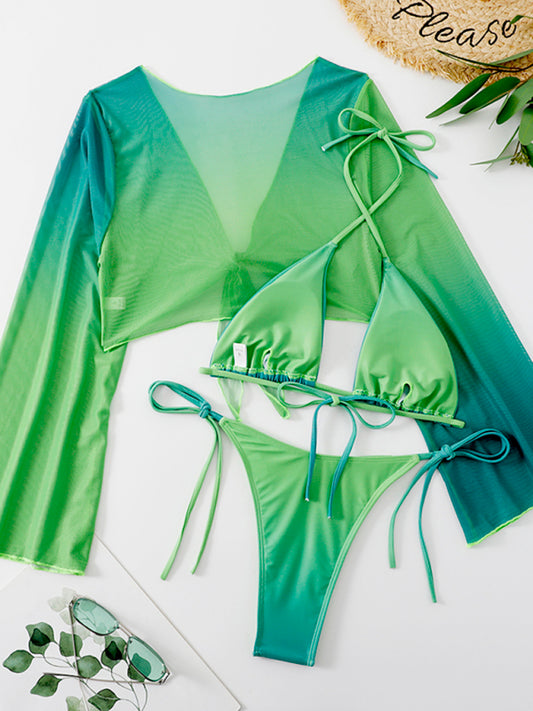Shawls
-
Tropical Flower Leaves Print Shawl Cover-Up
Regular price $35.95 USDRegular priceUnit price / per$71.99 USDSale price $35.95 USDSale -
Ribbed Hem V-Neck Sweater With Shawl
Regular price $49.00 USDRegular priceUnit price / per$97.99 USDSale price $49.00 USDSale -
Davi & Dani Shawl Collar Ribbed Detail Button Up Cardigan
Regular price $111.00 USDRegular priceUnit price / per$221.99 USDSale price $111.00 USDSale -
Blue Zone Planet | Black Stripe Shawl Neckline Open Cardigan With Pockets
Regular price $74.00 USDRegular priceUnit price / per$130.73 USDSale price $74.00 USDSale -
Blue Zone Planet | Openwork Boat Neck Shawl Cover Up
Regular price $18.00 USDRegular priceUnit price / per$37.00 USDSale price $18.00 USDSale -
Blue Zone Planet | Solid Color Slightly See-Through Long-Sleeved Style One-Line Shawl Top
Regular price $36.00 USDRegular priceUnit price / per$55.16 USDSale price $36.00 USDSale -
Blue Zone Planet | Strappy Printed Smocked One-Piece Swimsuit (Shawl Not Included)
Regular price $32.00 USDRegular priceUnit price / per$47.84 USDSale price $32.00 USDSale -
Blue Zone Planet | Swimsuit With Resort Floral Print Swimsuit Shawl (Swimsuit Not Included)
Regular price $32.00 USDRegular priceUnit price / per$47.60 USDSale price $32.00 USDSale -

Blue Zone Planet | Bikini Digital Printed Swimsuit Shawl Beach High Waist Swimsuit Three Piece Set
Regular price $48.00 USDRegular priceUnit price / per$71.10 USDSale price $48.00 USDSale -
Blue Zone Planet | Loose And Versatile Knitted Cardigan Short Sweater Shawl Jacket
Regular price $46.00 USDRegular priceUnit price / per$69.19 USDSale price $46.00 USDSale -
Blue Zone Planet | Three-Piece Bikini Mesh Shawl Split Swimsuit High Waist Bikini
Regular price $38.00 USDRegular priceUnit price / per$57.60 USDSale price $38.00 USDSale
Collection: Shawls
The Timeless Elegance of Shawls in Women's Fashion
In the ever-evolving world of fashion, certain elements endure, transcending fleeting trends and embodying timeless elegance. Among these, the shawl stands out as a versatile, enduring, and culturally rich accessory in women's fashion. With its roots deeply entrenched in history and its presence ubiquitous across various cultures, the shawl's journey from a simple garment to a fashion staple is a tale of art, functionality, and style.
The Historical Tapestry
The history of shawls is as layered as the fabrics from which they are woven. Originating thousands of years ago, shawls were first documented in the ancient civilizations of Mesopotamia and Egypt. They were not merely fashion items but symbols of status and indicators of cultural identity. In India, the intricate Kashmiri shawls, known for their fine wool and exquisite embroidery, became synonymous with luxury in the 18th and 19th centuries. Similarly, the traditional Andean shawls, or 'mantas,' were integral to indigenous identities in South America.
Cultural Convergence
Shawls embody a cultural convergence, where patterns, materials, and techniques from around the world intermingle. The paisley pattern, a motif shaped like a teardrop, is a prime example. It originated in Persia, flourished in India, and eventually became a fashion sensation in Europe during the 18th and 19th centuries. This pattern is a testament to how shawls have been a canvas for cultural expression and exchange.
A Modern Fashion Statement
Today, shawls are more than just a layer to ward off the cold; they are a statement of style and personality. Designers incorporate contemporary elements into traditional designs, creating pieces that are both modern and timeless. From high fashion runways to street-style accessories, shawls adorn shoulders in myriad forms – be it the elegant Pashmina, the bold African Kente, or the chic European silk square.
The Sustainability Angle
In the current climate of environmental awareness, shawls also emerge as champions of sustainable fashion. Many are crafted from natural fibers and produced through traditional methods that support local artisans and reduce environmental impact. Brands that emphasize ethical production and sustainability are increasingly popular, making shawls not just a fashion statement but a conscious choice.
The Emotional Connection
Beyond fashion and function, shawls hold an emotional significance. They are often passed down through generations, becoming heirlooms that carry stories and memories. A shawl can be a comforting embrace, a token of love, or a cherished keepsake, adding an intangible value that transcends its physical form.
Key Points to Understand the Subject
1. Historical Significance: Shawls have a rich history, deeply rooted in various cultures around the world. They are not just fashion items but also symbols of cultural identity and status.
2. Cultural and Fashion Fusion: Shawls are a testament to cultural fusion, blending patterns, fabrics, and designs from different parts of the world. They continue to evolve, incorporating modern elements while retaining their traditional essence.
3. Sustainability and Emotional Value: In the contemporary fashion landscape, shawls stand out for their sustainable production and emotional significance. They represent a blend of ethical fashion choices and personal narratives, making them more than just accessories.
The shawl, with its diverse forms and meanings, is a remarkable element of women's fashion. It is a piece that honors its past, celebrates the present, and looks forward to a sustainable and stylish future.
FAQs on "The Timeless Elegance of Shawls in Women's Fashion"
Q1: What historical significance do shawls hold in women's fashion?
A1: Shawls have a profound historical significance in women's fashion. They originated in ancient civilizations and were symbols of status and cultural identity. Over centuries, shawls have been integral to various cultures, including the luxury Kashmiri shawls from India and the traditional Andean 'mantas.'
Q2: How do shawls represent cultural convergence in fashion?
A2: Shawls are a perfect example of cultural convergence in fashion. They incorporate patterns, materials, and techniques from different cultures. For instance, the paisley pattern, which originated in Persia, became popular in India and later a fashion sensation in Europe, showing how shawls have been a canvas for cultural exchange.
Q3: In what ways are shawls used in modern fashion?
A3: In modern fashion, shawls are used not just for warmth but as stylish accessories. Contemporary designs blend traditional elements with modern trends, making them versatile for high fashion runways and everyday street style. Various types, like the Pashmina, African Kente, or European silk squares, offer diverse fashion statements.
Q4: Why are shawls considered sustainable fashion choices?
A4: Shawls are often made from natural fibers and produced through traditional, artisanal methods. This approach supports local communities and minimizes environmental impact. Many brands focusing on ethical production and sustainability have made shawls synonymous with conscious fashion choices.
Q5: What emotional value do shawls carry?
A5: Shawls often hold significant emotional value, being passed down through generations as heirlooms. They carry stories and memories, symbolizing love, comfort, and heritage. This emotional connection adds an intangible value to shawls, making them more than mere fashion accessories.
Q6: Can shawls be integrated into contemporary wardrobes?
A6: Absolutely. Shawls are incredibly versatile and can be integrated into contemporary wardrobes effortlessly. They can be draped over modern outfits for a touch of elegance or used as statement pieces to add character to a simple ensemble.
Q7: Are there any specific cultural styles of shawls that are particularly popular?
A7: Yes, several cultural styles of shawls have gained international popularity. The Kashmiri Pashmina from India, known for its fine wool and embroidery, and the brightly colored African Kente shawls are notable examples. Each style reflects its unique cultural heritage and aesthetic appeal.
Q8: How has the fashion industry adapted the traditional shawl into modern fashion?
A8: The fashion industry has adapted the traditional shawl by incorporating contemporary design elements, experimenting with new materials, and blending traditional motifs with modern aesthetics. This adaptation has helped shawls remain relevant and appealing in the fast-paced world of modern fashion.
Please note that for the most current and detailed information on shawls and fashion trends, you might want to visit specialized authority fashion websites like Blue Zone Planet.



![Davi & Dani Shawl Collar Ribbed Detail Button Up Cardigan-TOPS / DRESSES-[Adult]-[Female]-Azure-S-2022 Online Blue Zone Planet](http://bluezoneplanet.com/cdn/shop/files/07e37917-84dd-4346-9519-c486fa73e578-Max.jpg?v=1736567498&width=533)
![Blue Zone Planet | Black Stripe Shawl Neckline Open Cardigan with Pockets-Sweaters & Cardigans/Cardigans-[Adult]-[Female]-Black Stripe-S-2022 Online Blue Zone Planet](http://bluezoneplanet.com/cdn/shop/files/e8daa6f240ac96a1.jpg?v=1731481498&width=533)
![Openwork Boat Neck Shawl Cover Up-TOPS / DRESSES-[Adult]-[Female]-Mustard-S-2022 Online Blue Zone Planet](http://bluezoneplanet.com/cdn/shop/files/40e5d875-d796-4c17-a672-f8215024e939-Max.jpg?v=1719726176&width=533)





